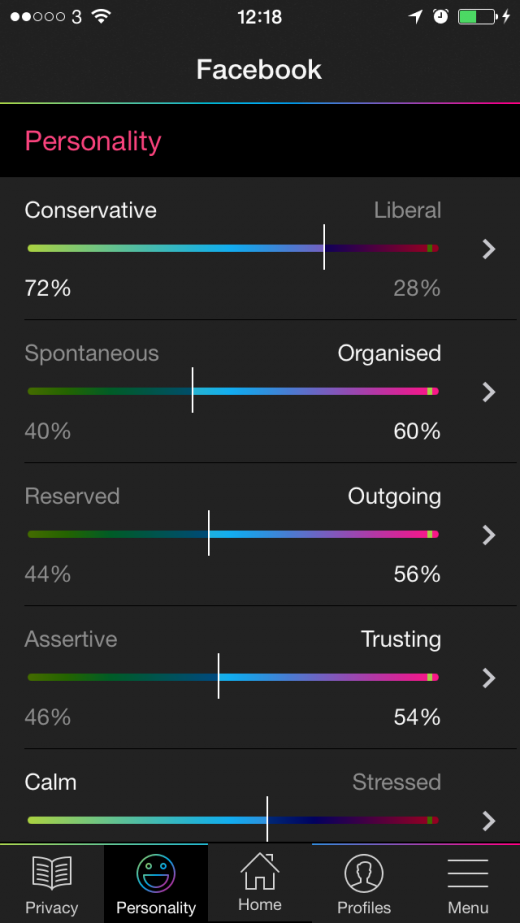
The best managers create productive and engaging work environments for team members. That’s why, according to Gallup’s recent State of the American Manager: Analytics and Advice for Leaders report, managers account for 70 percent of the variance in employee engagement. In other words, good managers increase employee engagement, and that makes teams more productive.
So, how do they do it? What do they know about their team members that other managers don’t?
Personality is the key
The more managers understand about personality, and the different personality types on their teams, the easier it becomes to engage and inspire team members.
For some, that simply means learning which personalities clash with the others and how to manage them.
But for the best managers, it means understanding what motivates their team members and what makes them successful, so they can create the most productive and engaging environment to work in.
How, you ask? What can you do other than make observations and build assumptions based off of those select interactions? Integrate personality testing and personality type education into your office’s talent management strategy.
Go straight to the source and ask your employees to take one of the many free online personality-type assessments on the market. Choose a reliable personality type assessment, email them a link to the test, and ask them to print out the results for a professional development session on how personality affects the workplace dynamic. They’ll learn more about themselves, and you’ll be able to find out what motivates the people that drive your business.
Not ready to take that step yet? That’s OK, there’s plenty of reading you can do to learn more about how to recognize the personalities in your office first. Obviously, the Web has a treasure trove of information on the different types of personality assessments, personality types, and personality analysis tools that are out there, so before making any decisions, take the time to do some research online.
When you do, you’ll start to recognize six main personality dimensions in the employees around your office:
- Judging: The Judgers in your office are ambitious, determined, organized, and decisive. They are typically the employees whose workspaces are covered in to-do lists, work schedules, and reminders of deadlines.
- Perceiving: The counterpart of the Judger, Perceivers are typically the more open-minded, adaptable, spontaneous, and changeable employees in your office. Perceivers are adaptable and tend to respond well to unpredictable situations.
-
Extraversion:
Lively, energetic, quick-witted, and clever, Extraverts are always looking for ways to interact with their co-workers. In the office, Extraverts are the employees who thrive working on teams and brainstorming with others.
-
Introversion:
Where Extraverts are outgoing and excited, Introverts are thoughtful, reserved, and focused. They’re often recognized as the “loners” in the office because they thrive when working independently.
-
Thinking: Thinkers are the analytical, objective, rational, and tough-minded employees that love to get into the nitty-gritty details. You’ll typically see these employees focusing on learning as much as they can about a particular topic and constantly looking for ways to add to their knowledge base.
-
Feeling: In stark contrast to the Thinkers in your office stand the Feelers. These employees are the passionate, empathetic, warm, and supportive employees who are looking for ways to impact others lives through their work. Feelers are distinguished by their ability to dig into a project or proposal and offer views based on different motivations, not just the facts.
Want to focus on traditional research? Check out these two books to learn more about recognizing different personality indicators at work: “The Art of SpeedReading People” and “Type Talk at Work.”
When you hire someone new, you want to get them at 100 percent productivity as soon as possible…post-hire personality assessments can help. They are a great way to find out where new hires will best succeed in your organization and how they will fit into the team.
If possible, find a way to integrate personality assessment into your orientation or onboarding process so you have the information you need to manage a successful workforce, from the beginning.
What do I look for?
I can hear you now: “OK, I get it. Personality testing can help me understand my employees. Great. But what do I look for? How does knowing my employees’ personalities help me be a better manager?”
Simply put, it helps you find out the best ways to motivate your employees and keep them engaged.
Recently, my team at Truity conducted a survey of 25,759 respondents to determine which of the 16 Briggs Myers personality types are happiest and most successful at work. The results shed light on the personality types that are more successful and engaged. They also help managers understand why. And understanding why is the first step to successfully managing different personalities in the office.
Lifestyle is a big factor when it comes to your employees’ success
In the Briggs Myers world, a person’s lifestyle or “structure” is measured in terms of judging vs. perceiving. Where Judgers typically take a structured, more organized approach to life, Perceivers are characterized by their flexible, spontaneous approach to how they live their lives.
In the work world, the more structured approach appears to lead to greater success, more managerial responsibilities, and higher job satisfaction. Judgers’ natural tendencies toward order and planning make them great assets for long-term projects and team leader roles. This is the most likely reason for why Judgers outperformed their counterparts by a significant amount in each of these three measures in the report.
In the office, you’re bound to have a mix of Judgers and Perceivers to manage. Here are some simple strategies for managing both personalities to ensure everyone is satisfied at work:
Judgers: Order and organization lead to satisfaction in a Judger’s life, so it’s important for managers to provide opportunities at work that will engage these personality traits. Consider assigning the Judgers on your team assignments that involve project management and strategic planning in order to keep them engaged and satisfied at work.
Perceivers: Take the time to discuss the issues your Perceivers are having in the office. If they feel like they aren’t getting a shot at leadership roles, inform them of upcoming leadership opportunities and what they can do to get them. If they are struggling with deadlines, consider starting a status update system to keep them on track. In the end, the extra work may lead to greater success and higher job satisfaction.
Energy style impacts success and job satisfaction
Extraverts, who look outward for energy, can often overwhelm their introverted teammates, who tend to prefer quiet reflection and low-stimulus areas when they need to recharge. Extraverts make more, manage more people, and are happier at work due to their ability to work in high energy situations and collaborate for longer periods of time.
Since teams are rarely made up completely of Extraverts or Introverts, it’s important for managers to understand how to get the most out of each energy style and to help them work together more efficiently:
- Extraverts: Managers should encourage discussion and open communication between teammates to engage Extraverts, but be sure to focus the discussion on work issues and client challenges. Providing focused outlets for Extraverts to interact with other team members will allow them to recharge and keep productivity at high levels.
- Introverts: For Introverts, managers need to provide quiet spaces to work. Whether it’s an assigned “quiet work” conference room or offices where Introverts can shut the door to get some alone time, providing a quiet space for Introverts to retreat to when they are overwhelmed will increase their productivity and keep them from getting burned out.
Decision-making style affects employee satisfaction
Happy employees are more engaged employees.
Even though Thinkers make more money and manage more people, Feelers are happiest at work. Feelers’ tendency to focus on jobs that match up with their personal values and affect others positively makes enjoying their work easier. Thinkers, who are more focused on outward signs of success (salary, title, etc.), tend to be less satisfied with their work.
Managers who understand the differences between these motivations have a better chance of making both personality types successful:
- Thinkers: They think they know what makes them happy at work, but it’s a manager’s job to make sure they really do. Managers need to check in with Thinkers periodically to find out if they are happy and engaged. When they aren’t, good managers will establish goals for Thinkers that relate to their metrics for success, but also challenge them to consider other measures of achievement in the office.
- Feelers: Feelers want to know they are making a difference. Rather than just telling Feelers “good job,” managers should find ways to show Feelers how their actions contribute to the company’s goals and reflect its values. Remember, Feelers want to know that their work reflects their personal values, so good managers will seek to strengthen that tie with the company.
Getting the most out of your team
Getting the most out of your team is a matter of finding out the motivations of different team members and balancing one personality against another. That means finding ways to manage Judgers’ and Perceivers’ organizational tendencies, getting Extraverts and Introverts to share ideas efficiently, helping Thinkers to be more satisfied at work, and encouraging Feelers to inspire the rest of the team to be more engaged.
Seems impossible, doesn’t it? It’s not.
One of the best ways to achieve these goals is to educate your employees about how their personalities affect their earning potential, job satisfaction, and other aspects of their personal and professional lives.
For example, if Perceivers realize how a lack of organization or planning can keep them from climbing the corporate ladder, they may be more inclined to focus on organization in the workplace. These kind of insights coming from a manager can help change the way employees approach their work and, in the long run, make them more successful.
Take a look at the personalities in your office and find creative ways to engage their different personality styles for success. After all, managing the different personalities in your office more efficiently, even though they are just the tip of the iceberg, can help build better team engagement, increase productivity, and result in more satisfied employees.
What personalities are the most successful in your office? The happiest? Share your experiences in the comments below!
Read Next: The psychology of emojis
Image credit: Shutterstock
Get the TNW newsletter
Get the most important tech news in your inbox each week.











